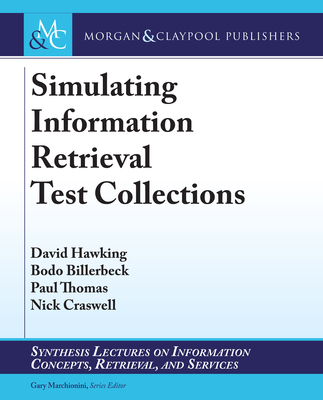Dynamic Information Retrieval Modeling (Synthesis Lectures on Information Concepts, Retrieval, and Services)
暫譯: 動態資訊檢索模型(資訊概念、檢索與服務綜合講座)
Grace Hui Yang, Marc Sloan, Jun Wang
- 出版商: Morgan & Claypool
- 出版日期: 2016-06-01
- 售價: $1,820
- 貴賓價: 9.5 折 $1,729
- 語言: 英文
- 頁數: 146
- 裝訂: Paperback
- ISBN: 1627055258
- ISBN-13: 9781627055253
-
相關分類:
Data-mining
海外代購書籍(需單獨結帳)
相關主題
商品描述
Big data and human-computer information retrieval (HCIR) are changing IR. They capture the dynamic changes in the data and dynamic interactions of users with IR systems. A dynamic system is one which changes or adapts over time or a sequence of events. Many modern IR systems and data exhibit these characteristics which are largely ignored by conventional techniques. What is missing is an ability for the model to change over time and be responsive to stimulus. Documents, relevance, users and tasks all exhibit dynamic behavior that is captured in data sets typically collected over long time spans and models need to respond to these changes. Additionally, the size of modern datasets enforces limits on the amount of learning a system can achieve. Further to this, advances in IR interface, personalization and ad display demand models that can react to users in real time and in an intelligent, contextual way.
In this book we provide a comprehensive and up-to-date introduction to Dynamic Information Retrieval Modeling, the statistical modeling of IR systems that can adapt to change. We define dynamics, what it means within the context of IR and highlight examples of problems where dynamics play an important role. We cover techniques ranging from classic relevance feedback to the latest applications of partially observable Markov decision processes (POMDPs) and a handful of useful algorithms and tools for solving IR problems incorporating dynamics.
The theoretical component is based around the Markov Decision Process (MDP), a mathematical framework taken from the field of Artificial Intelligence (AI) that enables us to construct models that change according to sequential inputs. We define the framework and the algorithms commonly used to optimize over it and generalize it to the case where the inputs aren't reliable. We explore the topic of reinforcement learning more broadly and introduce another tool known as a Multi-Armed Bandit which is useful for cases where exploring model parameters is beneficial. Following this we introduce theories and algorithms which can be used to incorporate dynamics into an IR model before presenting an array of state-of-the-art research that already does, such as in the areas of session search and online advertising.
Change is at the heart of modern Information Retrieval systems and this book will help equip the reader with the tools and knowledge needed to understand Dynamic Information Retrieval Modeling.
商品描述(中文翻譯)
大數據和人機資訊檢索(HCIR)正在改變資訊檢索(IR)。它們捕捉了數據的動態變化以及用戶與IR系統之間的動態互動。動態系統是指隨著時間或事件序列而變化或適應的系統。許多現代IR系統和數據都展現了這些特徵,而傳統技術通常忽略了這些特徵。缺少的是模型隨時間變化並對刺激作出反應的能力。文件、相關性、用戶和任務都表現出動態行為,這些行為通常在長時間跨度內收集的數據集中被捕捉到,模型需要對這些變化作出反應。此外,現代數據集的大小限制了系統所能達到的學習量。此外,IR介面、個性化和廣告展示的進步要求模型能夠以智能和上下文相關的方式實時對用戶作出反應。
在本書中,我們提供了一個全面且最新的動態資訊檢索建模介紹,這是IR系統的統計建模,能夠適應變化。我們定義了動態,在IR的背景下它的含義,並強調了動態在某些問題中扮演重要角色的例子。我們涵蓋了從經典的相關性反饋到最新的部分可觀察馬可夫決策過程(POMDPs)等技術,以及一些有用的算法和工具,用於解決包含動態的IR問題。
理論部分基於馬可夫決策過程(MDP),這是一個來自人工智慧(AI)領域的數學框架,使我們能夠構建根據序列輸入變化的模型。我們定義了這個框架以及常用來優化它的算法,並將其推廣到輸入不可靠的情況。我們更廣泛地探討強化學習的主題,並介紹另一個工具,稱為多臂賭徒(Multi-Armed Bandit),這在探索模型參數有利的情況下非常有用。隨後,我們介紹可以用來將動態納入IR模型的理論和算法,然後展示一系列已經做到這一點的最先進研究,例如在會話搜索和在線廣告領域。
變化是現代資訊檢索系統的核心,本書將幫助讀者掌握理解動態資訊檢索建模所需的工具和知識。












